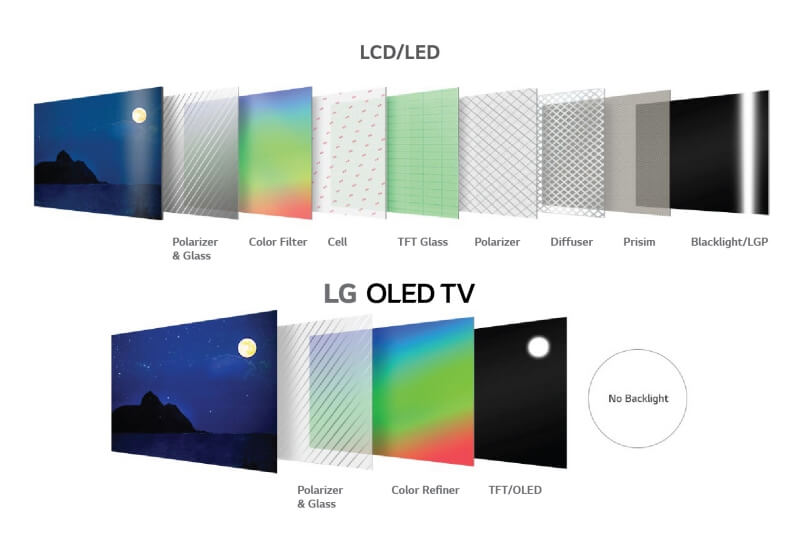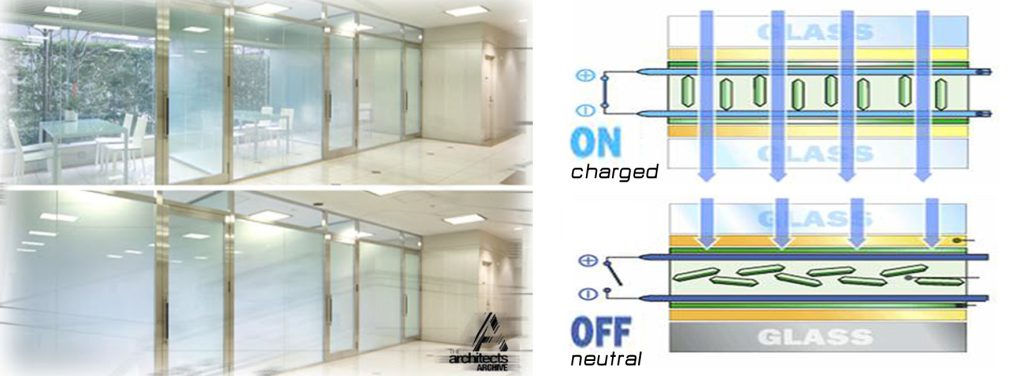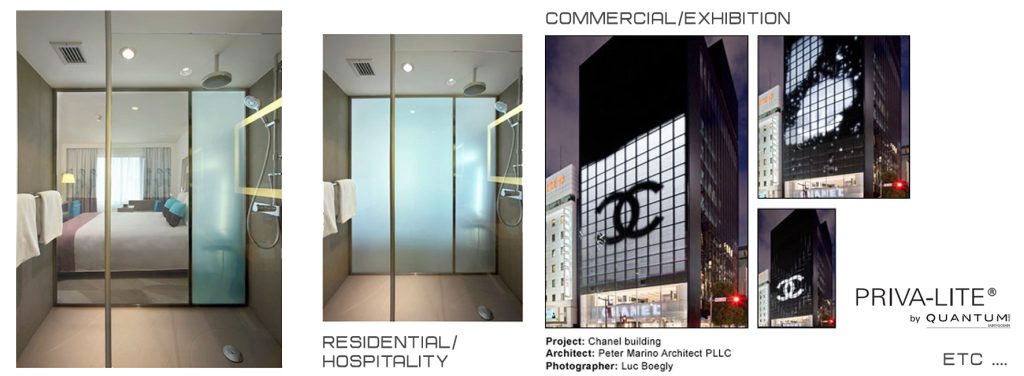Glass Pt.2: Vaguely Opaque!
- Lydia Tiasiri
- September 17, 2023
- Sustainability, Wellness
- Design, FENN DESIGNERS, Future, Interior Design, LCD, LietoMe, Liquid Crystal, Lydia TF, Molecules, Monitor, Partition, privacy, Screen, Space Planning, Special Glass, Style of Living, Sustainability, wellness design
- 0 Comments
From simple particles of silica, glass has become one of the most used materials in the construction industry. It’s many valuable characteristics contribute to its value of being one of the most sustainable and wellness promoting products commercially available.
Glass allows for:
- Light transmission
- Visibility
- Durability
- Safety
- Recyclability
- many many more….
Today, I want to highlight a specific type of glass product.
Glass technologies have been making leaps and bounds in the past century. One of which is an extremely interesting, yet a bit pricy piece of technology that can be used on projects: Privacy Smart Glass.

So, what about this glass? Why is it so special? Or a better question is, how does it actually work?!
Let’s start with the name, it has many; A famous one is from the French manufacturer, Saint-Gobain Glass aptly named “Priva-lite”. It is also called “liquid crystal switchable glass”, “electro-chromatic glass” or even “smart glass”.
The main component of the technology in the glass is something called liquid crystal molecules. Sounds familiar? These liquid crystals have been under research since the late 1800’s and have been widely used in a product that we commonly know today as LCD.
Basically, if you thought LCDs are just TV screens, you would be wrong.

LCDs have been used in almost all electronic displays in our world today; from the lights in your calculator displays to your iPhones and to the dashboards of your cars. LEDs are even dated. These days, we get to have OLEDs at our fingertips whether it’s on our phones or even our Nintendo Switches!
So, let’s talk about the technology of the liquid crystal glass. It uses a very simple technique: it gets powered by electricity and responds accordingly. It has 2 states: the neutral and the charged. The “neutral” state basically translates to when the liquid crystal molecules are in random alignment creating an opaque effect on the glass, the glass will look like it’s frosted but will still be translucent. Then, when electricity is turned on, the glass goes into the “charged” state. This is when the molecules line up into rows and produces a clear, transparent effect to the glass.

The application of this glass is so diverse: because the liquid crystal molecules come in the form of a thin film that fits between two layers of glass, this makes it able to be laminated for security. Not to mention, this glass’ ability to turn opaque makes it a very sensible substitute to using conventional curtains and blinds for privacy. It can be curved, silk screened, sand blasted, and even used as a projecting surface unlike the typical glass. The “Priva-lite” glass also has a very low energy consumption, using just 5 W/m2 of power.

For fun, If you want to see this type of glass ‘in action’ on screen, go check out a TV series called “Lie to me”. The main protagonist is basically a human-lie detector; with his team he runs an institute in which they read micro-expressions on people’s faces. The show is set mostly indoors, where the protagonist and his team runs a lab fitted with mini cameras at every corner in a very cool glass interrogation room. The glass panels in this room have a very fascinating ability to go opaque then clear at the flick of a switch!

Come back next article for more on this brilliantly, sustainable material!